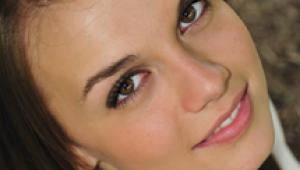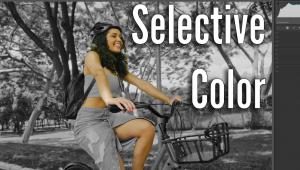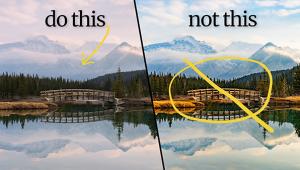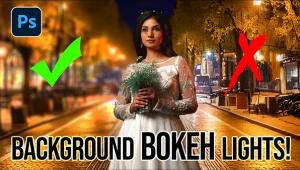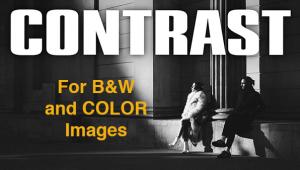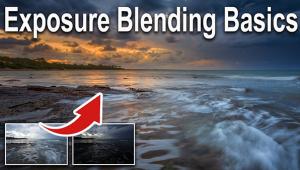Abbie's photo or the first picture you took was way more better than the other ones below it. I like what you did there because it perfectly matches her eyes,hair and skin. - Wes Upchurch
Using Fill Flash For Outdoor Portraits; Informal Is The Word, But Style Is The Key Page 2
In Ali’s case, her brilliant red hair demanded a unique background. Here, I chose an autumn-hued burning bush—a red rose color. Ali’s skin is very light and reflective with light blue eyes and fiery red hair. Too much flash would wash out her facial features. Using a -2 EV setting on the flash, I got just enough fill light to bring out the color in her eyes without overwhelming the lightness of her skin tone. If you display the histogram, the right side is lower because of the -2 EV flash compensation. You’ll also notice that the red bush is illuminated, but not from the weakened flash. Here, I had an assistant shade Ali with a piece of foamcore, but still allowed the bush to be sunlit.
Ali—Red Hair, Light Skin, Blue Eyes |
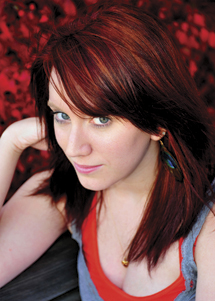 |
Gabby also has very light skin and wore a dark top. I used the tree’s shade, allowing the background to blow out. I always take a reflected meter reading of the subject’s face and determine the proper flash output. With digital it’s easy—if you have too much light, reduce it; not enough, add more. My favorite setting seems to be -1 EV flash compensation because it works out most of the time.
Gabby—Blonde Hair, Light Skin, Dark Top |
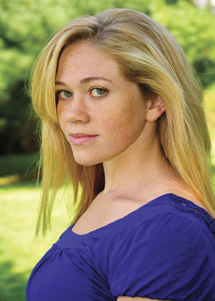 |
Sue wore a brightly colored top with her shoulders exposed, and her tanned skin was offset by her blonde hair. I wanted Sue a little less illuminated than the background, but she still needed that summer radiance. A full-powered fill flash was necessary because a light reading from Sue’s face showed very little reflected light.
Sue—Blonde Hair, Tan Skin, Bare Shoulders |
 |
Tech Notes
All images were taken with a Nikon D700 with a Zoom-Nikkor 24-120mm f/3.5-5.6. I’m using the built-in flash on the Nikon D700. Exposure mode is Aperture-Priority to control depth of field and keep it shallow; the higher shutter speed will usually freeze any movement. The flash is used as fill flash with either full, -1, or -2 flash compensation. I am reading the exposure using the D700’s internal spot meter reading off the subject’s face. I am using no other flash modifier other than flash exposure compensation. In Photoshop, I may move the Highlights right input slider level slightly to the left.
Chuck Gloman is the Program Director of the TV/Film department at DeSales University. He may be reached via e-mail at: chuck.gloman@desales.edu.
- Log in or register to post comments



